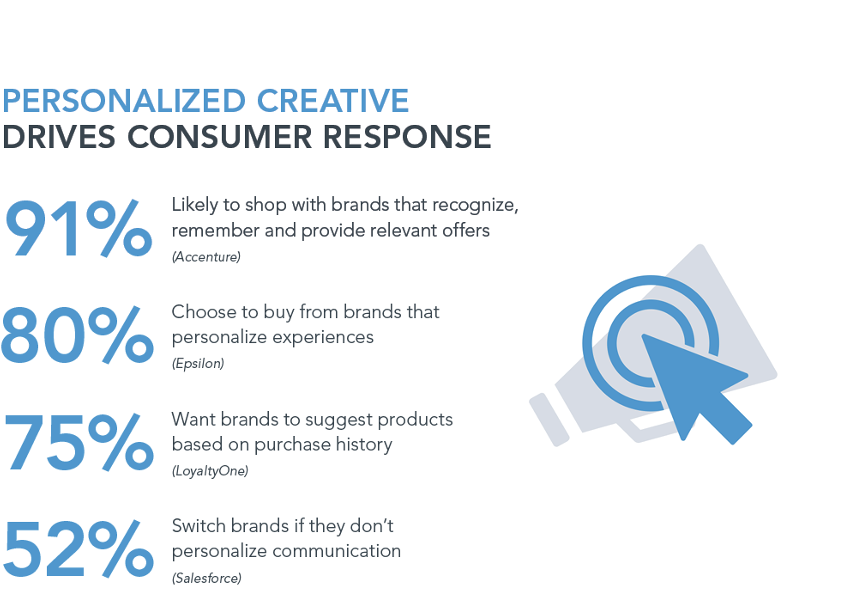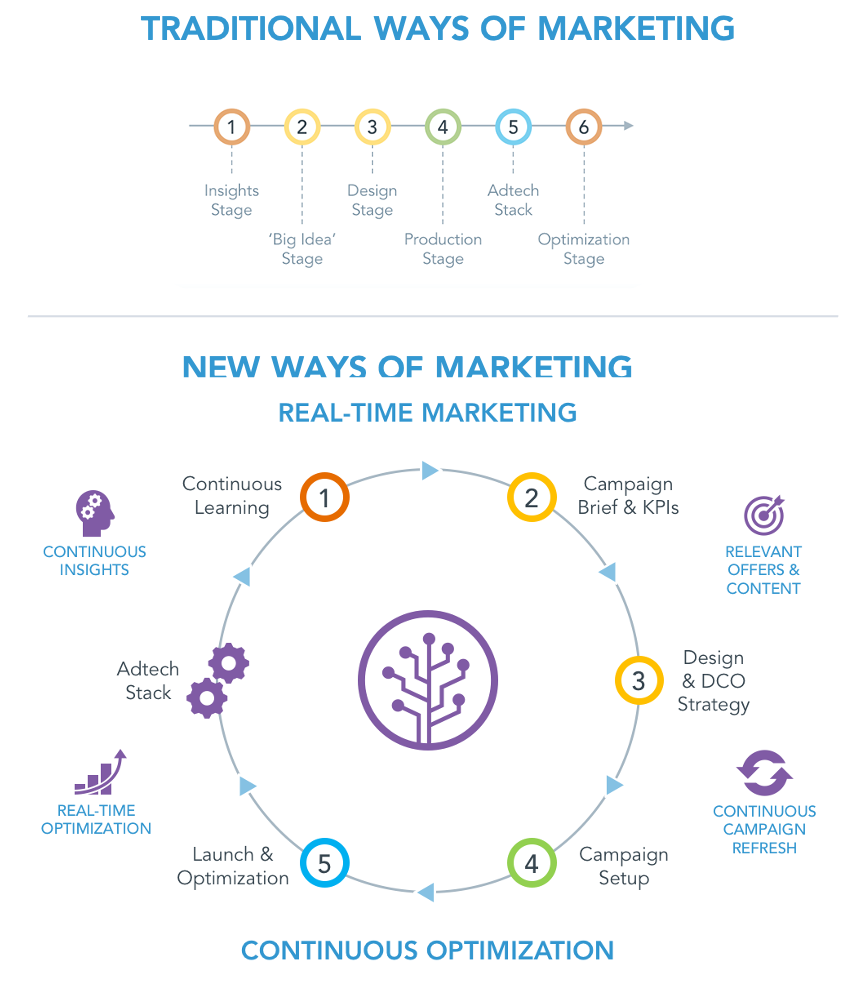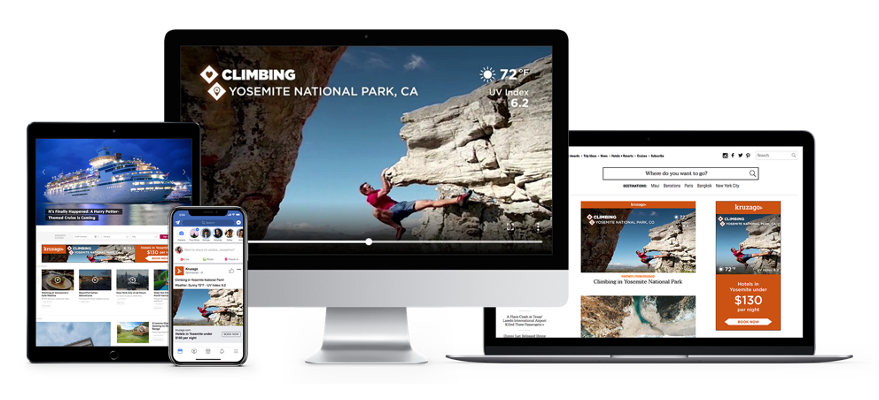Global brands have achieved significant scale and efficiencies across most of marketing over the past 10 years, leveraging digital marketing technologies like DMPs for data management, DSPs for managing targeted media, and a host of other tools for analytics, media planning, and campaign management. Unfortunately, one piece of the marketing stack has been stubbornly resistant to automation and scale: creative and content production.
“We’ve squeezed as much as we can out of media targeting and optimization. The next big lever we will use to achieve better efficiency and performance is optimizing creative and content for relevance and engagement.”
It has been a well-known fact that relevant messaging and creative produce better consumer engagement. Yet, most of the focus thus far has been on optimizing media spend. Brands have woken up to this fact recently, as one marketing executive at a large global CPG brand puts it: “we’ve squeezed as much as we can out of media targeting and optimization. The next big lever we will use to achieve better efficiency and performance is optimizing creative and content for relevance and engagement.”
Outside of media costs, creative and content production costs are easily the largest piece of marketing spend that will benefit from automation and scale.
Creative has been a difficult area to automate because there are parts of the content production process that require some human guidance, and others that need people to manage them entirely. With creative and content production costs escalating significantly over the past few years, these costs have become a key area of focus for large brands. Here’s why:
- Consumers are demanding personalized engagement instead of one-size-fits-all messaging. For instance, Indonesians don’t respond well to Caucasian models in an ad creative.
- As brands look to expand globally, they’re catering to local tastes by employing local creative and content agencies to tailor their messaging. This tactic is inherently expensive and often inefficient.
- Marketers are increasingly focused on “moments,” which causes them to continuously produce new content that is relevant to the moment in which they hope to capture the consumer’s attention.
- An explosion of new ad formats (display, video, social, native, OOH, addressable TV, AR/VR) has required marketers to adapt their creative and content to a variety of new channels.
In response to these market needs, marketers are adopting new approaches that are more consumer-centric, data-driven, and real-time. These approaches, known variously as “Precision Marketing,” “Data-Driven Marketing,” or “Personalization,” have made cost management a more important priority for marketers than ever before.
Precision Marketing: Data Drives Changes in Content and Creative
Precision marketing is a new style of marketing where brands really focus their efforts on creating 1:1 personalized communication with consumers, shifting from the one-size-fits-all approach of the past. Data is a key element of precision marketing, but so is velocity. In other words, a combination of data and real-time marketing cycles seems to produce the best outcomes in terms of consumer engagement.
Recent market research bears this out:
This new way of marketing is creating ripple effects across large global marketing teams. They try to adapt to this new way of working, which not only demands more variations of content, but also a much shorter cycle for creative production and an opportunity to measure and optimize the creative in real-time.
Here is a visual comparison of this change:
Three Culprits of Cost Escalations
The costs associated with precision marketing escalates as the approach requires the production of significantly more creative and content tailored to very specific audiences and often to individuals. So, the first and biggest area of savings would be to automate the production of creative for several cases where costs can quickly escalate.
Here are the typical causes that drive up production costs:
- Localization: Traditionally, brands have had a global creative concept, branding guidelines, and other style rules, which then pass on to the various markets and sub-brands they operate. In turn, these markets and sub-brands use these guidelines to individually produce the creative for a variety of needs, from localization to seasonal messaging to special offers.
This leads to significant amounts of duplicative work. For instance, the difference between the French and German versions of a piece of creative could often be as simple as a single line of creative copy (since the product and audience are the same). But, when these creative assets are produced individually, the costs essentially double. Similarly, a new pricing offer often results in the creation of a new set of assets to promote the offer, when in fact the only difference between the earlier offer and the new one is a few digits.
- Product Variations have also led to sizable duplicative costs. For example, a single allergy medication may have as many as 20 different types of packaging in the pill form, easily dissolving, liquid, various flavors, adult, children, and other variations. Personalizing the creatives to individual consumers who are likely to buy each of the packages could result in hundreds, and perhaps even thousands of creatives having to be individually developed.
Sample Creative Previews
- Advertisement and Media Formats: Due to the significant proliferation of ad formats across display, social, video (online and CTV), audio, messaging and native, as well as owned media channels such as email and website, significant amounts of money are spent simply on resizing and reformatting the same images and copy across all of the formats. While some of this may be necessary (for example, producing a 6-second video for social vs. a 30-second video for TV), a lot of these costs can be avoided by using technology to automatically resizing, scaling, and reformatting each piece of the content into each of the formats—without doing so manually each time.
How do global brands use creative automation to reduce production costs and boost media performance?
In 2019, Jivox customers saved $642 million in dynamic creative production cost, with over $1 billion overall return on investment. We invite you to download a copy of our complimentary ROI analysis and learn how leading global brands achieved significant savings with increased efficiency and scale using Jivox’s DCO technology. You will learn:
- How much could be saved on creative production costs by automating creative versioning?
- How does dynamic creative (DCO) technology deliver savings through automation?
- How do F500 CPG and F100 sports apparel companies use Jivox DCO to achieve ROI?





